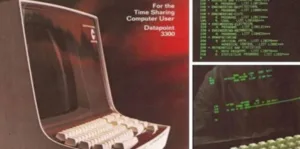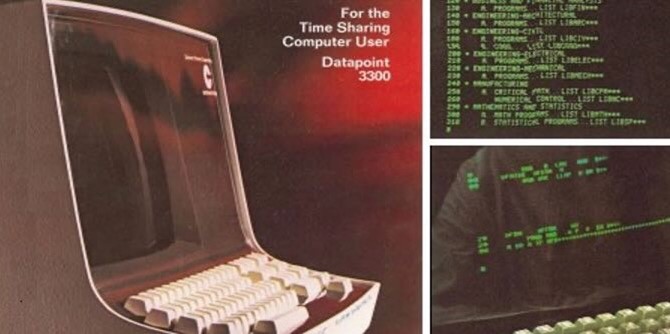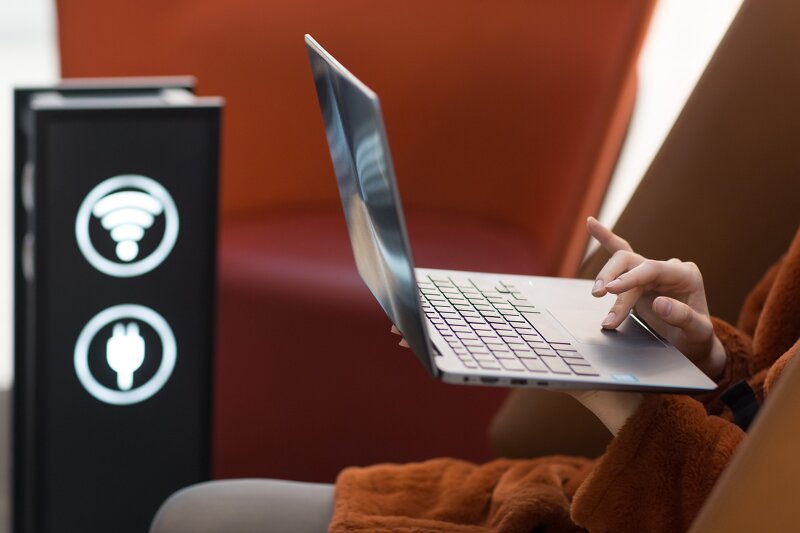If all, or even most, applications end up running on servers in the cloud, who needs a Windows PC? Most users care less about the OS and underlying hardware, and more (maybe only) about the applications.

Where and how an application runs is of no more concern or interest than where a TV show or movie comes from. Streaming entertainment naturally flowed into consumers’ homes because of the horn of plenty of offerings and the demand for non-real-time consumption. It didn’t matter if the music or video was on a USB stick, an optical disc, from a satellite, or over the Internet or air. The source was irrelevant and, along with it, the device that housed the source delivery system. The same applies to computer applications, whether they are high-end complex and computationally demanding simulations, ray-traced renderings, video games, or office applications.
Today, office applications and games are a comfortable hybrid with parts running real time in the cloud and parts running locally. However, our local devices are grossly inefficient, running typically for only a third of the day at most (come on Jon – both you and I run ours for more! Editor), and even then, not at full performance, sitting lazily with a blinking cursor. On the other hand, the servers in the cloud have an 80–95% utilization and an actual global 24/7 operation. It takes fewer of them to mimic the use of hundreds of local machines.
Time Share is an Old Idea
Time-share systems were developed in the 1960s to make computers more accessible. They used dumb terminals and were limited by communications. They were easily and joyfully replaced by minicomputers and then the PC. Power to the people! Everyone would have a personal computer and do what they want, when they want. But communications technology didn’t stand still. By the early 2000s, high-speed and affordable Internet permeated our lives. Simultaneously, over-the-air mobile communications empowered smartphones with intelligent user interfaces, further weakening the hold of the PC on the users in an enterprise and home.
Intermediate devices, known as tablets, bridged the display difference between a smartphone and a PC. Now, users had three, and unknowingly four, platforms to use. The obscure thin client used by lowly office workers or checkout clerks slowly expanded. A consumer version, known as the Chromebook, emerged; a thin-client device for everyone—a Volksclient. Ironically, the Chromebook began to look more like a PC adding local storage and higher-resolution screens. In contrast, PC suppliers tried to make thin and light Chromebook killers. The concept of a lightweight, low-cost mobile device like a Chromebook, tablet, hybrid thin-and-light PC, or large smartphone was changing the paradigm just as the original PC did 40 years ago.
These devices were interesting from a technology novelty point of view, but not extraordinary. They had bigger cameras, or higher resolution screens, or more and faster memory, but nothing really new. Nothing new since the original timeshare terminals in the 1960s—over 60 years ago, older than most people in the industry today, and likely unknown to many today. (well, Jon, I think the switch from text to bit-mapped graphics was a change, but a long time ago – Editor)
The PC Remains
But the PC remains and is a constant source of investigation and discussion. The PC as a platform drags along with it operating systems, APIs, a host of applications and utilities, peripherals, and communications of every imaginable type. However, the marriage of application and hardware development, each leading the other from time to time, no longer seems relevant, regardless of the platform. New users are not coming to any platform despite the misguided and ill-advised enthusiasm sparked by a pandemic and imaginary currencies. Hardware is not attracting new users. Hardware is on a life-support replacement schedule. There will be a few exciting years of short-term growth and more years that are not so exciting, but the long-term trend seems to be downward.
However, even in its declining state, the PC remains vital and thought-provoking in annual shipments. Why is that? Mostly, it is due to legacy applications in the enterprise, legacy ways of using workstations, and legacy types of construction of video games. People like familiarity; it is comforting and comfortable—it’s the way we did/do things. If it isn’t broken, don’t fix it.
Platform is Fading
The platform is fading, but new hardware announcements are still exciting for the potential and new capabilities that application developers have wanted. But developers represent a tiny population of the user base. Granted, they are a force multiplier—build a better application (mouse trap), and the world will beat a path to your door.
 But very few users are asking for new capabilities and features. They will gladly accept them if reasonably priced, but most users just want a (slightly) better version of what they have. Steve Jobs and Henry Ford understood that. Henry Ford is famous for saying users wanted a better horse, not a horseless carriage. And Jobs said customers don’t know what they want until we’ve shown [it to] them.
But very few users are asking for new capabilities and features. They will gladly accept them if reasonably priced, but most users just want a (slightly) better version of what they have. Steve Jobs and Henry Ford understood that. Henry Ford is famous for saying users wanted a better horse, not a horseless carriage. And Jobs said customers don’t know what they want until we’ve shown [it to] them.
A Billion PCs
By 2000, a billion PCs had been sold, and the mantra at Intel and Microsoft was ‘reaching the second billion users’. At the time, there were six billion people in the world, plenty of TAM. By 2014, it is estimated that two billion PCs had been sold. How many were still in use was another question. In the meantime, almost seven and a half billion mobile phones had been sold, most with access to the Web. So, the TAM for smartphones—not so great.
Today, one can play Triple-A first-person shooters on a smartphone or tablet. All Office apps are in one’s purse or pocket. And if the screen is too small, it can be transmitted (thrown) to a TV or a PC. Ironically, one can use a tablet as a secondary screen to a PC.
Killer Apps
It used to be popular to say that Lotus 1-2-3, the second spreadsheet after VisiCalc, was the killer app that propelled the PC into dominance in the enterprise. That’s half correct. Word processing, which replaced dedicated layout programs like Wang and others offered, was the other killer app—and more people use word processors than any other application.
The next killer application came with the Netscape Navigator, a Web browser built on Mosaic concepts. And the adaptation of the Web browser to the smartphone, and then the tablet, propelled those mobile devices to stardom, and ubiquity.
The browser took us to the cloud. The world, a new world, was empowered by new communications speeds at affordable prices by multiple providers—it was/is competitive and, therefore, highly adopted. Now almost every device in our lives is connected either by Wi-Fi or a baseline carrier. And all those connections go to the servers in the cloud.
As I type this on my landlocked desktop PC, even though I think Word is doing all the work, like real-time spelling and grammar checking, the cloud-based recommender programs are reading what I wrote and anticipating what I will likely write next and offering me those words. My smartphone does the same thing; and everyone has experienced buying something on the Web and being told that you might also like these other things since you like this. We live in the cloud, and it always knows where we are and what we are doing. Cut the cord? That’s a fantasy, like privacy and security in today’s always-connected world.
You Can Disconnect
It is possible to disconnect from the cloud; many government agencies and some corporations run locally and are air gapped from the Web. (as are those that deal with Hollywood content – Editor) Those agencies and companies even go so far as to squirt gunk into their PCs’ USB and display ports, and no mobile devices are allowed. In many government agencies and companies, a mobile device is just as feared and prohibited as a gun. And all the local PCs run legacy programs.
Software applications, consumer and professional, used to be a lifetime purchase—you bought it, you owned it—unless you actually read the EULA (end-user license agreement). Then you learned you don’t own it; you are merely licensing it. That meant if you successfully reversed engineered and sold it, you were in trouble. It was called protecting IP. It took several years and a few lawsuits to get that notion accepted. Today, no one would any more read an EULA than they would read the fine print on the purchase contract of a car or any lease.
 The Cloud Owns You
The Cloud Owns You
Once the ownership of the software was established, the next step was to replace the lifetime purchases with subscriptions. With subscription software, you always had the latest version pushed to you, often (as in the case of a smartphone) pushed and installed without your knowledge or involvement. And when that happened, the cloud owned you and your devices.
The ratio of client–server application execution is shifting from 90–10 to 20–80. As it moves—again without your knowledge or involvement, but with your consent, because you blindly accepted the EULA (and what choice did you have?)—you gave over your applications to the cloud. And those applications, running smoothly and satisfactorily in the cloud, are making your client devices impotent. They are merely vehicles of conveyance for the convenience of the cloud.
Fewer Client Devices
But the users know that, so they buy fewer new client devices because they can play the latest games on their three-year-old smartphones. They can launch massive rendering runs and simulation calculations from their four-year-old tablet. Brain-dead consumer interaction programs run either by the consumer or a clerk in a retail store are already 10–90 client–server. How much of your favorite airline reservations system application is in your client device? Almost zero. This means all your personal details: where you live, your credit card data, and subsequently, your financial situation, your age, and other family members are known by the airline and its multitude of partners. And, when you ask for a rental car, your profile goes to that organization, which now brings in your insurance information and all the tentacles from it.
So, we live in the cloud, and we can’t escape, nor do many of us want to. There is far less friction in our lives, thanks to the cloud. And since the cloud doesn’t care what client device you use, why buy a new one?
Sounds dystopian for the PC and somewhat for the smartphone industries, doesn’t it? But let’s get perspective. Even though PC sales are down, over 300 million have been sold this year, along with 1.75 billion smartphones and about 160 million tablets. People aren’t buying over 2.3 billion devices because they don’t have anything else to do with their money (well, most people, that is). There must be an actual and perceived ROI (e.g., productivity, entertainment, or status) for the purchase. But the cloud is whittling away at that ROI, especially for the PC.
 PC Headed to Dodo Land?
PC Headed to Dodo Land?
Unless some genuinely novel killer app is introduced that is totally, or at least 80%, client-based, the PC is headed to dodo land. Real-time ray tracing was a spurt, but not enough people saw or felt the benefit. It became a nice-to-have but never a must-have, except for a few professional users. The metaverse is still a marketing hype effort, and even if the Meta version and vision of it is accepted, most users will not wear a bulky headset to play games or send an email. Here again, users in the professional space will incorporate VR into their activities—but not all day, every day.
Consumers and enterprises will react positively to genuine innovations and truly new capabilities. But if it is just a polished version of what they have with a few more pixels a bit faster, justifying an ROI becomes difficult. And in a global situation where the industrialized nations are trying to avoid a recession, chrome-plating the same old thing isn’t going to help. It’s harder than ever to get legacy applications to run any faster, so even that bulwark isn’t going to slow the decline in shipments, let alone sustain growth.
The hardware suppliers are on a track. They follow the node and try to stuff more of the same stuff in the same space and add a few new features they think users will want or at least like. So, it’s up to application developers to bring new excitement and solve problems cleverly. Between the ever more powerful client devices and the backup of almost infinite processing power from the cloud, the application developers are painfully slow at exploiting the advances in hardware capability or creating a demand for additional hardware capabilities.
The shift to the cloud and the subsequent decline in client device shipments can be laid right at the doorsteps of the software community. Where’s the innovation? Where are the solutions to the hard problems? Speaker-independent voice recognition systems that tell you to leave your name and number and someone will get back to you are not the answer. If cloud-based systems know so much about me, why don’t they know me? And then, when they transfer me to an actual human, why does that person ask me for my phone number and city?
It used to be that the applications led the hardware, but that was back when mainframe applications were being ported to the PC. The PC of the time was woefully inadequate. Now, the PC is years ahead of the apps—it is easy for those applications to run on a server in the cloud. Until innovative new applications, which include games, show up, consumers will continue to ignore new client devices and only buy one when theirs fails or the maintenance costs exceed replacement costs.
Heigh-ho, heigh-ho, it’s off to the cloud we go. (JP)



